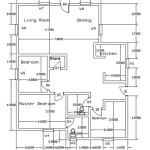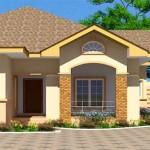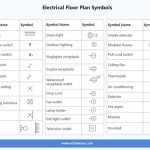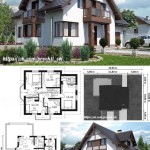Tiny Houses 2017: Small House Pictures and Plans
The year 2017 saw the continued rise in popularity of the tiny house movement. Fueled by factors ranging from financial constraints and environmental concerns to a desire for minimalist living and increased mobility, tiny houses presented an attractive alternative to traditional housing for a growing segment of the population. This article explores the trends in tiny house design, popular plans, and notable examples from 2017, providing insights into the evolution of this architectural and lifestyle phenomenon.
Tiny houses, generally defined as dwellings under 400 square feet, offer a unique response to the challenges of modern living. They challenge conventional notions of homeownership and promote a simpler, more sustainable way of life. In 2017, the movement had matured significantly, moving beyond a niche interest to a more mainstream consideration for those seeking affordable and flexible housing options.
Key Trends in Tiny House Design During 2017
Several significant design trends emerged or gained traction during 2017, reflecting the evolving needs and preferences of tiny house enthusiasts. A greater emphasis was placed on incorporating sustainable materials and energy-efficient technologies. Reclaimed wood, recycled steel, and solar panels became increasingly common features, contributing to the eco-friendly appeal of tiny homes. The integration of greywater recycling systems and composting toilets reflected a heightened awareness of resource conservation.
Multi-functional spaces were another defining characteristic. Given the limited square footage, designers focused on maximizing usability by creating rooms that could serve multiple purposes. For example, a living room might transform into a bedroom with the use of a pull-down bed or a modular seating arrangement. Kitchens were often equipped with compact appliances and innovative storage solutions to optimize efficiency. Flexibility and adaptability were key design principles.
Aesthetic considerations also played a crucial role. While functionality remained paramount, tiny house designs in 2017 showcased a greater emphasis on visual appeal. A shift toward more modern and sophisticated styles was evident, with clean lines, minimalist decor, and strategic use of natural light. Large windows and skylights were incorporated to create a sense of spaciousness and connection to the outdoors. Designers explored various architectural styles, ranging from rustic farmhouse to contemporary minimalist, to cater to diverse tastes.
Furthermore, the integration of smart home technologies became more prevalent. Features such as automated lighting, climate control, and security systems added convenience and enhanced the living experience in tiny spaces. Smart devices allowed residents to monitor and manage their homes remotely, increasing energy efficiency and providing peace of mind.
Popular Tiny House Plans in 2017
The availability of pre-designed tiny house plans expanded significantly in 2017, offering aspiring homeowners a wide range of options to choose from. These plans catered to different needs, budgets, and aesthetic preferences. Several plans stood out for their popularity and innovative design features.
The "Nugget," a compact and cost-effective design, gained popularity for its simplicity and ease of construction. Its efficient layout maximized living space without sacrificing comfort. Key features included a well-equipped kitchenette, a comfortable sleeping loft, and ample storage. The Nugget was particularly appealing to those seeking a minimalist and affordable tiny house option.
The "Modern Farmhouse" plan catered to those seeking a more traditional aesthetic. This design combined rustic charm with modern amenities, creating a warm and inviting living space. Key features included a spacious living area, a well-appointed kitchen with farmhouse-style details, and a comfortable bedroom. The Modern Farmhouse plan often incorporated reclaimed wood and other sustainable materials, adding to its appeal.
The "Off-Grid Oasis" plan focused on self-sufficiency and sustainability. This design incorporated features such as solar panels, rainwater harvesting systems, and composting toilets, allowing residents to live independently and reduce their environmental impact. The Off-Grid Oasis plan was particularly popular among those seeking a more sustainable and environmentally conscious lifestyle.
The availability of 3D modeling and virtual reality tools allowed prospective buyers to visualize the interior and exterior of these tiny houses before making a purchase decision. This enhanced transparency and facilitated the customization process, ensuring that the final product met the specific needs and preferences of the homeowner.
Notable Examples of Tiny Houses from 2017
Several notable tiny houses completed in 2017 showcased the creativity and ingenuity of tiny house designers and builders. These examples highlighted the diverse possibilities of tiny living and inspired others to embrace the movement.
One example was a custom-built tiny house on wheels designed for a family of four. This dwelling incorporated clever space-saving solutions, such as bunk beds for the children and a convertible dining table that could be transformed into a workspace. The use of lightweight materials and a durable trailer chassis ensured that the house was both mobile and structurally sound.
Another notable example was a tiny house built entirely from reclaimed materials. This project showcased the potential for sustainable construction and demonstrated how discarded materials could be transformed into a beautiful and functional living space. The use of reclaimed wood, recycled steel, and salvaged windows contributed to the eco-friendly character of the house.
A third example was a luxury tiny house designed for full-time living. This dwelling featured high-end finishes, smart home technologies, and a spacious layout that maximized comfort and convenience. The inclusion of a gourmet kitchen, a spa-like bathroom, and a dedicated workspace demonstrated that tiny living did not necessarily require sacrificing luxury or comfort.
These examples illustrate the diverse range of tiny houses that were being built in 2017, catering to different lifestyles, budgets, and aesthetic preferences. They showcased the potential for tiny living to be both sustainable and stylish, providing a viable alternative to traditional housing.
The legal and regulatory landscape surrounding tiny houses also continued to evolve in 2017. While some municipalities remained resistant to the concept, others began to embrace tiny houses as a solution to affordable housing shortages and zoning restrictions. Changes to building codes and zoning ordinances allowed for the construction of tiny houses in designated areas, paving the way for greater acceptance and integration of this alternative housing option.
The increasing popularity of tiny house communities also played a role in the growing acceptance of the movement. These communities provided a supportive environment for tiny house enthusiasts, offering shared amenities, social interaction, and a sense of belonging. They also served as a model for sustainable living and community development.
The media coverage of the tiny house movement continued to expand in 2017, further raising awareness and inspiring others to consider this alternative lifestyle. Television shows, documentaries, and online platforms showcased the stories of tiny house dwellers, highlighting the benefits and challenges of living in a smaller space. This increased visibility helped to dispel misconceptions and promote a more nuanced understanding of the movement.
The tiny house movement in 2017 was characterized by innovation, sustainability, and a growing acceptance of alternative housing options. The designs, plans, and examples from this year demonstrate the potential of tiny living to address a range of societal challenges, from affordable housing shortages to environmental degradation. As the movement continues to evolve, it is likely to play an increasingly important role in shaping the future of housing.

11 Houses Ideas In 2024 House Plans Floor Victorian

Tiny House Plan Examples

82 Best Tiny Houses 2024 Small House Pictures Plans

Tiny House Plan Examples

Modern Cabin House Plans 12x20 Log Floor Plan Small Tiny Blueprints For Houses Cabine Huis Plannen Huizen Grondplan

Tiny House Plans Floor Home Designs Blueprints Houseplans Com

The Best 2 Bedroom Tiny House Plans Houseplans Blog Com

Tiny Home Before And After Ideas Forbes

Tiny House Plans 4x9 Meters 2 Bedroom Terrace Roof Samhouseplans

13 Cool Tiny Houses On Wheels








